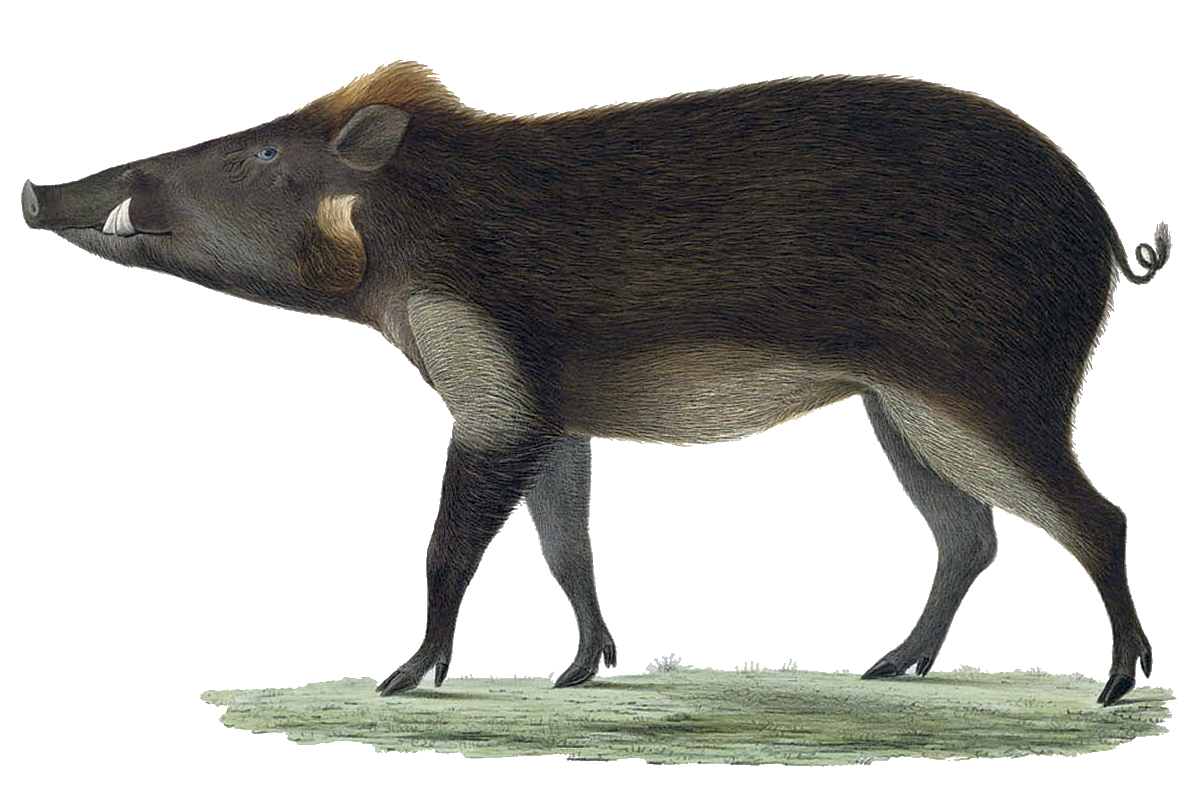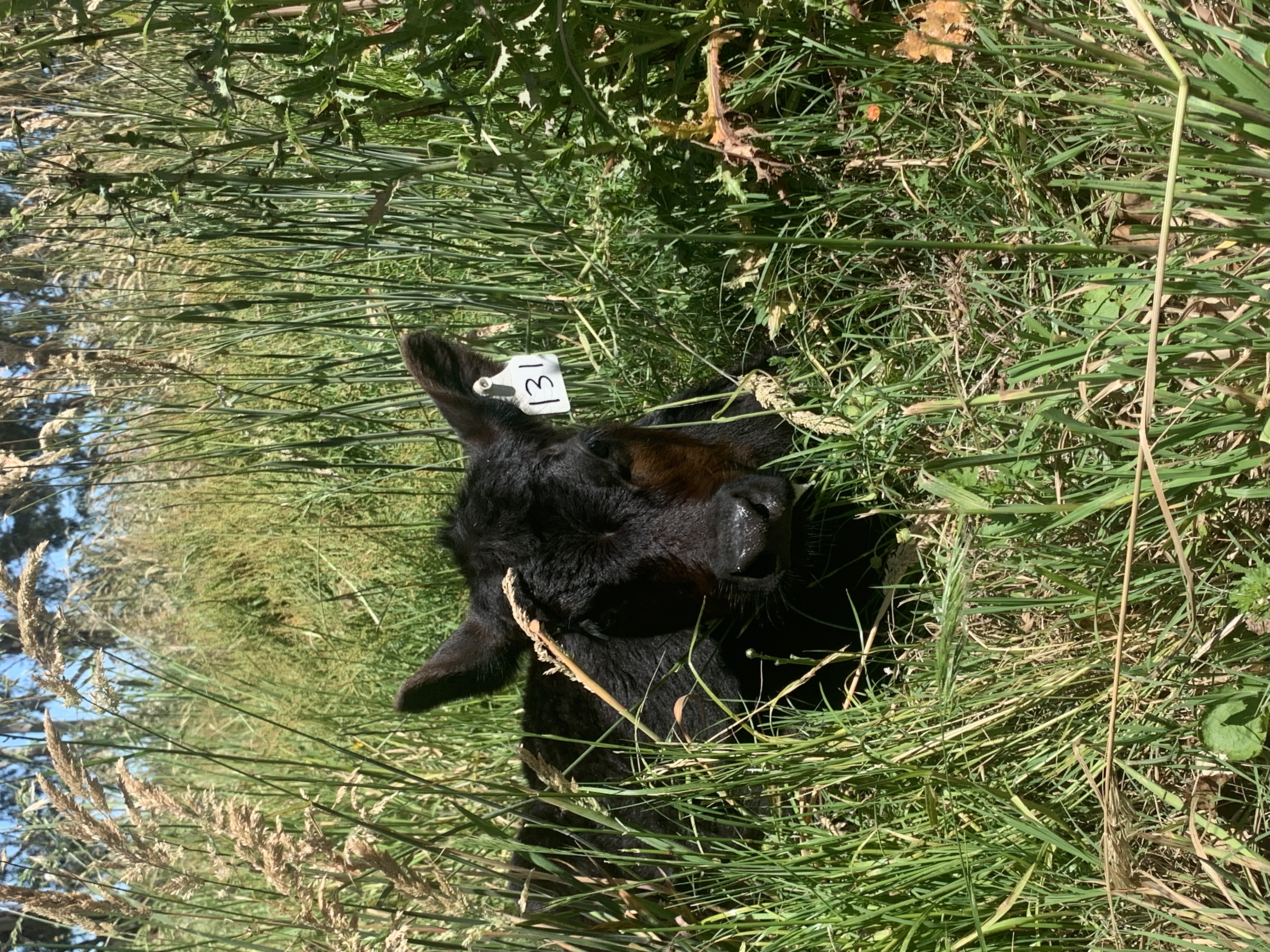|
Livestock Unit
Livestock grazing comparison is a method of comparing the numbers and density of livestock grazing in agriculture. Various units of measurement are used, usually based on the grazing equivalent of one adult cow, or in some areas on that of one sheep. Many different schemes exist, giving various values to the grazing effect of different types of animal. Use Livestock grazing comparison units are used for assessing the overall effect on grazing land of different types of animals (or of mixtures of animals), expressed either as a total for a whole field or farm, or as units per hectare (ha) or acre. For example, using UK government Livestock Units (LUs) from the 2003 scheme a particular pasture field might be able to support 15 adult cattle or 25 horses or 100 sheep: in that scheme each of these would be regarded as being 15 LUs, or 1.5 LUs per hectare (about 0.6 LUs per acre). Different species (and breeds) of livestock do not all graze in the same way, and this is also taken in ... [...More Info...] [...Related Items...] OR: [Wikipedia] [Google] [Baidu] |
Livestock
Livestock are the Domestication, domesticated animals that are raised in an Agriculture, agricultural setting to provide labour and produce diversified products for consumption such as meat, Egg as food, eggs, milk, fur, leather, and wool. The term is sometimes used to refer solely to animals which are raised for consumption, and sometimes used to refer solely to farmed ruminants, such as cattle, sheep, and goats. The breeding, maintenance, slaughter and general subjugation of livestock called ''animal husbandry'', is a part of modern agriculture and has been practiced in many cultures since humanity's transition to farming from hunter-gatherer lifestyles. Animal husbandry practices have varied widely across cultures and periods. It continues to play a major economic and cultural role in numerous communities. Livestock farming practices have largely shifted to intensive animal farming. Intensive animal farming increases the yield of the various commercial outputs, but also nega ... [...More Info...] [...Related Items...] OR: [Wikipedia] [Google] [Baidu] |
Llama
The llama (; or ) (''Lama glama'') is a domesticated South American camelid, widely used as a List of meat animals, meat and pack animal by Inca empire, Andean cultures since the pre-Columbian era. Llamas are social animals and live with others as a herd. Their wool is soft and contains only a small amount of lanolin. Llamas can learn simple tasks after a few repetitions. When using a pack, they can carry about 25 to 30% of their body weight for 8 to 13 kilometre, km (5–8 miles). The name ''llama'' (also historically spelled "lama" or "glama") was adopted by European colonization of the Americas, European settlers from Indigenous people in Peru, native Peruvians. The ancestors of llamas are thought to have originated on the Great Plains of North America about 40 million years ago and subsequently migrated to South America about three million years ago during the Great American Interchange. By the end of the last Quaternary glaciation, ice age (10,000–12,000 years ago) ... [...More Info...] [...Related Items...] OR: [Wikipedia] [Google] [Baidu] |
Chicken
The chicken (''Gallus gallus domesticus'') is a domesticated subspecies of the red junglefowl (''Gallus gallus''), originally native to Southeast Asia. It was first domesticated around 8,000 years ago and is now one of the most common and widespread domesticated animals in the world. Chickens are primarily kept for chicken as food, their meat and egg as food, eggs, though they are also kept as pets. As of 2023, the global chicken population exceeds 26.5 billion, with more than 50 billion birds produced annually for consumption. Specialized breeds such as broilers and laying hens have been developed for meat and egg production, respectively. A hen bred for laying can produce over 300 eggs per year. Chickens are social animals with complex vocalizations and behaviors, and cultural references to chickens, feature prominently in folklore, religion, and literature across many societies. Their economic importance makes them a central component of global animal husbandry and agricu ... [...More Info...] [...Related Items...] OR: [Wikipedia] [Google] [Baidu] |
Domestic Sheep
Sheep (: sheep) or domestic sheep (''Ovis aries'') are a domesticated, ruminant mammal typically kept as livestock. Although the term ''sheep'' can apply to other species in the genus '' Ovis'', in everyday usage it almost always refers to domesticated sheep. Like all ruminants, sheep are members of the order Artiodactyla, the even-toed ungulates. Numbering a little over one billion, domestic sheep are also the most numerous species of sheep. An adult female is referred to as a ''ewe'' ( ), an intact male as a ''ram'', occasionally a ''tup'', a castrated male as a ''wether'', and a young sheep as a ''lamb''. Sheep are most likely descended from the wild mouflon of Europe and Asia, with Iran being a geographic envelope of the domestication center. One of the earliest animals to be domesticated for agricultural purposes, sheep are raised for fleeces, meat ( lamb, hogget or mutton), and milk. A sheep's wool is the most widely used animal fiber, and is usually harvested ... [...More Info...] [...Related Items...] OR: [Wikipedia] [Google] [Baidu] |
Piglet (animal)
The pig (''Sus domesticus''), also called swine (: swine) or hog, is an omnivorous, domesticated, even-toed, hoofed mammal. It is named the domestic pig when distinguishing it from other members of the genus '' Sus''. Some authorities consider it a subspecies of ''Sus scrofa'' (the wild boar or Eurasian boar); other authorities consider it a distinct species. Pigs were domesticated in the Neolithic, both in China and in the Near East (around the Tigris Basin). When domesticated pigs arrived in Europe, they extensively interbred with wild boar but retained their domesticated features. Pigs are farmed primarily for meat, called pork. The animal's skin or hide is used for leather. China is the world's largest pork producer, followed by the European Union and then the United States. Around 1.5 billion pigs are raised each year, producing some 120 million tonnes of meat, often cured as bacon. Some are kept as pets. Pigs have featured in human culture since Neolithic times, ap ... [...More Info...] [...Related Items...] OR: [Wikipedia] [Google] [Baidu] |
Domestic Pig
The pig (''Sus domesticus''), also called swine (: swine) or hog, is an omnivorous, domesticated, even-toed, hoofed mammal. It is named the domestic pig when distinguishing it from other members of the genus '' Sus''. Some authorities consider it a subspecies of ''Sus scrofa'' (the wild boar or Eurasian boar); other authorities consider it a distinct species. Pigs were domesticated in the Neolithic, both in China and in the Near East (around the Tigris Basin). When domesticated pigs arrived in Europe, they extensively interbred with wild boar but retained their domesticated features. Pigs are farmed primarily for meat, called pork. The animal's skin or hide is used for leather. China is the world's largest pork producer, followed by the European Union and then the United States. Around 1.5 billion pigs are raised each year, producing some 120 million tonnes of meat, often cured as bacon. Some are kept as pets. Pigs have featured in human culture since Neolithic time ... [...More Info...] [...Related Items...] OR: [Wikipedia] [Google] [Baidu] |
Boar
The wild boar (''Sus scrofa''), also known as the wild swine, common wild pig, Eurasian wild pig, or simply wild pig, is a Suidae, suid native to much of Eurasia and North Africa, and has been introduced to the Americas and Oceania. The species is now one of the widest-ranging mammals in the world, as well as the most widespread Suina, suiform. It has been assessed as least concern on the IUCN Red List due to its wide range, high numbers, and adaptability to a diversity of habitats. It has become an invasive species in part of its introduced range. Wild boars probably originated in Southeast Asia during the Early Pleistocene and outcompeted other suid species as they spread throughout the Old World. , up to 16 subspecies are recognized, which are divided into four regional groupings based on skull height and lacrimal bone length. The species lives in matriarchal societies consisting of interrelated females and their young (both male and female). Fully grown males are usually s ... [...More Info...] [...Related Items...] OR: [Wikipedia] [Google] [Baidu] |
Domestic Horse
The horse (''Equus ferus caballus'') is a domesticated, one-toed, hoofed mammal. It belongs to the taxonomic family Equidae and is one of two extant subspecies of ''Equus ferus''. The horse has evolved over the past 45 to 55 million years from a small multi-toed creature, ''Eohippus'', into the large, single-toed animal of today. Humans began domesticating horses around 4000 BCE in Central Asia, and their domestication is believed to have been widespread by 3000 BCE. Horses in the subspecies ''caballus'' are domesticated, although some domesticated populations live in the wild as feral horses. These feral populations are not true wild horses, which are horses that have never been domesticated. There is an extensive, specialized vocabulary used to describe equine-related concepts, covering everything from anatomy to life stages, size, colors, markings, breeds, locomotion, and behavior. Horses are adapted to run, allowing them to quickly escape predators, and posse ... [...More Info...] [...Related Items...] OR: [Wikipedia] [Google] [Baidu] |
Dairy
A dairy is a place where milk is stored and where butter, cheese, and other dairy products are made, or a place where those products are sold. It may be a room, a building, or a larger establishment. In the United States, the word may also describe a dairy farm or the part of a mixed farm dedicated to milk for human consumption, whether from cows, buffaloes, goats, yaks, sheep, horses or camels. The attributive ''dairy'' describes milk-based products, derivatives, and processes, and the animals and workers involved in their production, for example dairyman, dairymaid, dairy cattle or dairy goat. A dairy farm produces milk and a dairy factory processes it into a variety of dairy products. These establishments constitute the global dairy industry, part of the food industry. The word ''dairy'' comes from an Old English word for ''female servant'', as milking was historically done by dairymaids. Terminology Terminology differs between countries. In the United States, for ex ... [...More Info...] [...Related Items...] OR: [Wikipedia] [Google] [Baidu] |
Calf (animal)
A calf (: calves) is a young domestic cow or bull. Calves are reared to become adult cattle or are slaughtered for their meat, called veal, and their Calfskin, hide. Terminology "Calf" is the term used from birth to weaning, when it becomes known as a ''weaner'' or ''weaner calf'', though in some areas the term "calf" may be used until the animal is a wiktionary:yearling, yearling. The birth of a calf is known as ''calving''. A calf that has lost its mother is an orphan calf, also known as a ''poddy'' or ''poddy-calf'' in British. ''Bobby calves'' are young calves which are to be slaughtered for human consumption. A ''vealer'' is a calf weighing less than about which is at about eight to nine months of age. A young female calf from birth until she has had a calf of her own is called a ''heifer'' (). In the American Old West, a motherless or small, runty calf was sometimes referred to as a dodie. Early development Calves may be produced by natural means, or by artificial ... [...More Info...] [...Related Items...] OR: [Wikipedia] [Google] [Baidu] |







